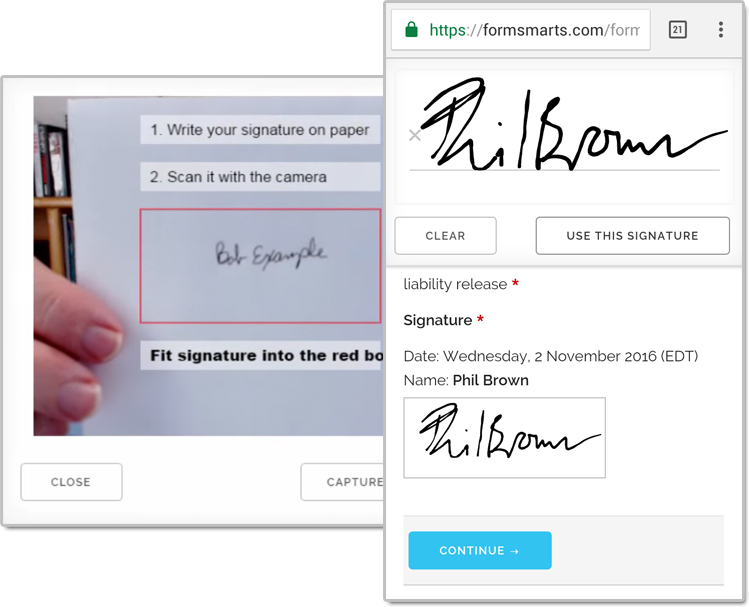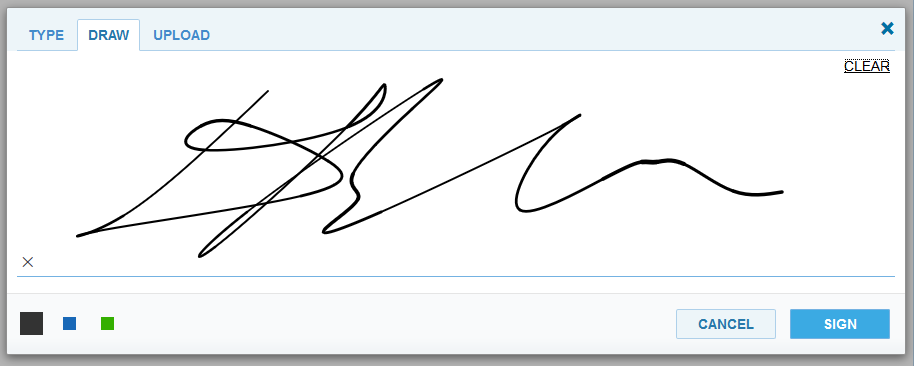

Digital certificates contain the public key of the individual or organization and are digitally signed by a CA.
#ONLINE SIGNATURE DRIVER#
Digital certificates – Digital certificates are analogous to driver licenses in that their purpose is to identify the holder of a certificate.The digital certificate can then be used to verify a person associated with a public key when requested. Once a CA validates someone’s identity, they issue a digital certificate that is digitally signed by the CA. Certificate authority (CA) – A CA is a trusted third party that validates a person’s identity and either generates a public/private key pair on their behalf or associates an existing public key provided by the person to that person.Public key infrastructure (PKI) – PKI consists of the policies, standards, people, and systems that support the distribution of public keys and the identity validation of individuals or entities with digital certificates and a certificate authority.Verify the user’s identity using the public key and checking it against a certificate authority.This means that only the recipient, who is in possession of the corresponding private key, can read the message. Ensure confidentiality by encrypting the entire message with the recipient’s public key.By doing this, any changes to the message will result in a different hash value. This is done by hashing the message and encrypting the hash value with their private key.

 Ensure integrity by creating a digital signature of the message using the sender’s private key. Public key cryptography can be used several ways to ensure confidentiality, integrity, and authenticity. The other key, called the private key, decrypts the data. One key, called the public key, encrypts the data. Public key cryptography – Public key cryptography (also known as asymmetric encryption) is a cryptographic method that uses a key pair system. Some of the more popular hashing algorithms in use today are Secure Hash Algorithm-1 (SHA-1), the Secure Hashing Algorithm-2 family (SHA-2 and SHA-256), and Message Digest 5 (MD5). This generated string is unique to the file being hashed and is a one-way function- a computed hash cannot be reversed to find other files that may generate the same hash value. Hash function – A hash function (also called a “hash”) is a fixed-length string of numbers and letters generated from a mathematical algorithm and an arbitrarily sized file such as an email, document, picture, or other type of data. How do digital signatures work?įamiliarize yourself with the following terms to better understand how digital signatures work: Why would you use a digital signature?ĭigital signatures increase the transparency of online interactions and develop trust between customers, business partners, and vendors. Digital signatures are significantly more secure than other forms of electronic signatures. In emails, the email content itself becomes part of the digital signature. Digital signatures create a virtual fingerprint that is unique to a person or entity and are used to identify users and protect information in digital messages or documents.
Ensure integrity by creating a digital signature of the message using the sender’s private key. Public key cryptography can be used several ways to ensure confidentiality, integrity, and authenticity. The other key, called the private key, decrypts the data. One key, called the public key, encrypts the data. Public key cryptography – Public key cryptography (also known as asymmetric encryption) is a cryptographic method that uses a key pair system. Some of the more popular hashing algorithms in use today are Secure Hash Algorithm-1 (SHA-1), the Secure Hashing Algorithm-2 family (SHA-2 and SHA-256), and Message Digest 5 (MD5). This generated string is unique to the file being hashed and is a one-way function- a computed hash cannot be reversed to find other files that may generate the same hash value. Hash function – A hash function (also called a “hash”) is a fixed-length string of numbers and letters generated from a mathematical algorithm and an arbitrarily sized file such as an email, document, picture, or other type of data. How do digital signatures work?įamiliarize yourself with the following terms to better understand how digital signatures work: Why would you use a digital signature?ĭigital signatures increase the transparency of online interactions and develop trust between customers, business partners, and vendors. Digital signatures are significantly more secure than other forms of electronic signatures. In emails, the email content itself becomes part of the digital signature. Digital signatures create a virtual fingerprint that is unique to a person or entity and are used to identify users and protect information in digital messages or documents. 
A digital signature-a type of electronic signature-is a mathematical algorithm routinely used to validate the authenticity and integrity of a message (e.g., an email, a credit card transaction, or a digital document).








 0 kommentar(er)
0 kommentar(er)
